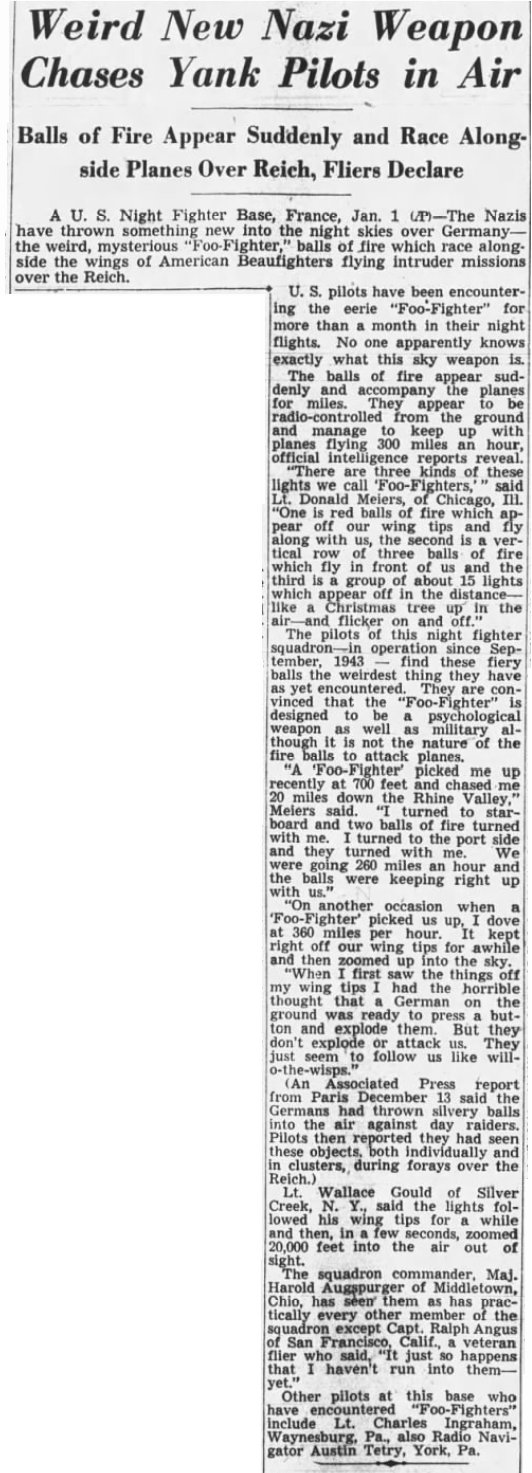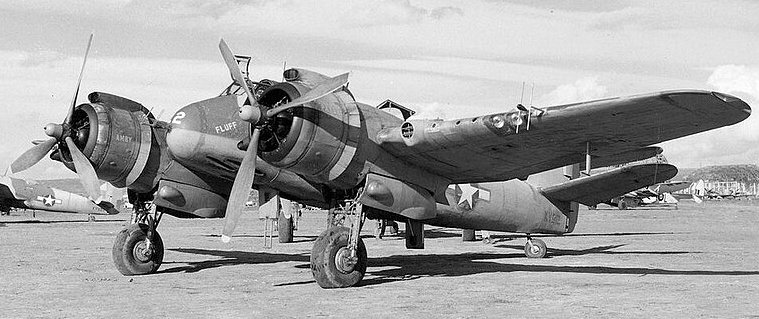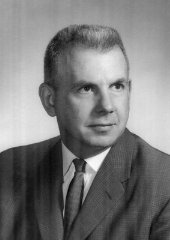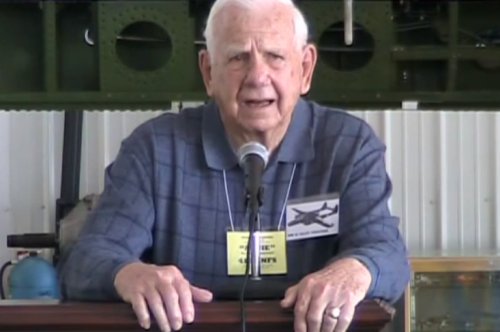ACUFO-1944-12-28-GERMANY-1
Harold Augspurger, of Middletown, Ohio, USA, Commanding Officer of the 415th Night Fighter Squadron in 1944, was mentioned in the U.S. Press on January 2, 1945, in an article about the mysterious “balls of lights” seen by this unit in their night intrusions on the Rhine Valley in the Wintoer of 1944:
The squadron commander, Maj. Harold Augspurger of Middletown, Ohio, has seen them as practically every other member of the squadron except Capt. Ralph Angus of San Francisco, Calif., a veteran flier who said, ldquo;It just so happens that I haven't run into them - yet.”
Ufology sources in the 2010 indicate that in the 2007 book “Strange Company - Military Encounters with UFOs in World War II” by Keith Chester, from letters and interviews he had with Major Harold Augspurger in 2003 and 2004, a case of December 28, 1944, came to light:
At night, Harold Augspurger, then Commanding Officer of the 415th Night Fighter Squadron, and his radar operator, Lieutenant Austin Petry, took off from France in the Bristol Beaufighter “Nightmare” and flew between 8,000 and 10,000 feet.
After crossing the German border, they lowered their altitude to 500 to 1,000 feet, looking for targets of opportunity, searching for any signs of life and anything that had a light. Their low-level hunt went on for about ninety minutes and proved to be an uneventful mission, but moments later, while they were still over Germany, something else was flying up there with them with its lights on.
Major Augspurger saw something flying parallel with them, “a white light out off to the starboard, right off the wing.” Trying to understand what was flying with its lights on, he asked his radar operator, but the radar screen remained clear.
Lieutenant Petry looked up and also saw the light. Major Augspurger was not able to estimate its distance and size. He said: “it was a big light far away or a small light close to us.” He first thought it was a flare, or maybe an aircraft, but it was unsure. It gave him the impression that it was pacing them, possibly keeping them under surveillance.
He decided to have a closer look and to try to pick it up on radar. He turned in towards the strange white light, straight towards it and getting closer. Lieutenant Petry reported nothing was showing up on his radar screen, and he could not understand why because the radar was working fine.
About thirty seconds later, the target “just took off and went straight up”, “at a tremendous speed” for a couple thousand feet, then the light vanished, simply disappearing. The total duration of this sighting was four to five minutes.
Harold Augspurger was apparently interviewed in 1991 by “skeptical” sociologist Jeffrey A. Lindell; a part of possibly this interview can be found on the Internet. The same or another interwiewed was aired in 1997, it can be viewed in this file.
In this part, Augspurger explain that the 415th NFS airmen saw the unidentified lights about November and December 1944. The lights used to fly off the wings of their airplanes, the one he saw himself was like a white light, a lot of other people were reporting it, some saw it with a red color, some with a green color, and some reported “they would try to chase one but never could catch it.”
| Date: | December 28, 1944 |
|---|---|
| Time: | Night. |
| Duration: | 4 to 5 minutes. |
| First known report date: | 2003 |
| Reporting delay: | 6 decades. |
| Country: | Germany |
|---|---|
| State/Department: | |
| City or place: |
| Number of alleged witnesses: | 2 |
|---|---|
| Number of known witnesses: | 1 |
| Number of named witnesses: | 2 |
| Reporting channel: | Letter and interview by ufologist. |
|---|---|
| Visibility conditions: | Night. |
| UFO observed: | Yes. |
| UFO arrival observed: | ? |
| UFO departure observed: | Yes. |
| UFO action: | Follows, goes away when approached. |
| Witnesses action: | Approach. |
| Photographs: | No. |
| Sketch(s) by witness(es): | No. |
| Sketch(es) approved by witness(es): | No. |
| Witness(es) feelings: | Puzzled. |
| Witnesses interpretation: | ? |
| Sensors: |
[X] Visual: 2
[ ] Airborne radar: No echo. [ ] Directional ground radar: [ ] Height finder ground radar: [ ] Photo: [ ] Film/video: [ ] EM Effects: [ ] Failures: [ ] Damages: |
|---|---|
| Hynek: | LN |
| Armed / unarmed: | Armed, four 20 mm cannons and 6 7.62 mm machine guns. |
| Reliability 1-3: | 3 |
| Strangeness 1-3: | 3 |
| ACUFO: | Possible extraterrestrial craft. |
[Ref. wbr1:] NEWSPAPER "THE WILKES-BARRE RECORD":

|
Balls of Fire Appear Suddenly and Race Along side Planes Over Reich, Fliers Declare
A U.S. Night Fighter Base, France, Jan. 1 (AP) - The Nazis have thrown something new into the night skies over Germany - the weird, mysterious “Foo-Fighter,” balls of fire which race along-side the wings of American Beaufighters flying intruder missions over the Reich.
U. S. pilots have been encountering the eerie “Foo-Fighter” for more than a month in their night flights. No one apparently knows exactly what this sky weapon is.
The balls of fire appear suddenly and accompany the planes for miles. They appear to be radio-controlled from the ground and manage to keep up with planes flying 300 miles an hour, official intelligence reports reveal.
“There are three kinds of these lights we call 'foo-fighters,'” said Lt. Donald Meiers, of Chicago, Ill. “One is red balls of fire which appear off our wingtips and fly along with us, the second is a vertical row of three balls of fire which fly in front of us and the third is a group of about 15 lights which appear off in the distance - like a Christmas tree up in the air - and flicker on and off.”
The pilots on this night fighter squadron - in operation since September, 1943 - find these fiery balls the weirdest things they have as yet encountered. They are convinced that the “Foo-Fighter” is designed to be a psychological weapon as well as military, although it is not the nature of the fireballs to attack planes.
“A 'foo-fighter' picked me up recently at 700 feet and chases me 20 miles down the Rhine Valley,” Meiers said. “I turned to starboard and two balls of fire turned with me. I turned to the port side and they turned with me. We were going 260 miles an hour and the balls were keeping right up with us.”
“On another occasion when a 'Foo-Fighter' picked us up, I dove at 360 miles per hour. It kept right off our wing for awhile and then zoomed up into the sky.
“When I first saw the thing off my wing tips I had the horrible thought that a German on the ground was ready to press a button and explode them. But they don't explode or attack us. They just seem to follow us like will-o-the-wisps.”
(An Associated Press report from Paris December 13 said that the Germans had thrown silvery balls into the air agains day raiders. Pilot then reported they had seen these objects, both individually and in clusters, during forays over the Reich.)
Lt. Wallace Gould of Silver Creek, N.Y., said the lights followed his wing tips for a while and then, in a few seconds, zoomed 20,000 feet into the air and out of sight.
The squadron commander, Maj. Harold Augspurger of Middletown, Ohio, has seen them as practically every other member of the squadron except Capt. Ralph Angus of San Francisco, Calif., a veteran flier who said, “It just so happens that I haven't run into them - yet.”
Other pilots at this base who have encountered “Foo-Fighters” include Lt. Charles Ingraham, Waynesburg, Pa., also Radio Navigator Austin Tetry, York, a.
[Ref. sis1:] "SIGHTINGS" VIDEO INTERVIEW:
Transcription of the video:
[Host voice, with images from the SF movie “The War of the Worlds”:]
“We have long been intrigued by the notion of life on other planets and our popular culture has been sown with images of UFOs for decades.”
[Host voice, with images of WWII planes in the night:]
“But the first widespread documented sightings of UFOs in the real world came in the closing months of World War II.”
[Harold F. Augspurger, with caption “Harold F. Augspurger, Commanding Officer, US 415th Nightfighter Squadron, 1943-45”:]
“The sightings we saw, well I think we were about, in 1944, about November, December then. We'd see these... “balls of light” that would fly off the wings of our airplanes. The one I saw was like a white light. A lot of the other people reported in it saw red lights. Some of them have seen some green lights and some of them reported that they tried to chase one, and never could catch it.”
[Ref. dwn2:] DOMINIQUE WEINSTEIN:
At night, Major Harold Augspurger (Commanding Officer of the 415th NFS) and his radar operator, Lt Austin Petry took off in his Bristol Beaufighter “Nightmare” from France and flew between 8,000 and I 0,000 feet. After crossing the German border, they lowered their altitude to 500 to 1,000 feet, looking for targets of opportunity, searching for any signs of life and anything that had a light. Their low-level hunt went on for about ninety minutes and proved to be an w1eventful mission. But moments later, while they were still over Germany, something else was flying up there with them and its lights were on. Major Augspurger was looking for up to find something flying parallel with them. Suddenly his attention was focused upon “a white light out off to the starboard, right off the wing.” Trying to understand what was flying with its lights on, he asked his radar operator who had his radar screen remained clear. Lt Petry looked up and saw it too. Major Augspurger was not able to estimate its distance and size. He said: “it was a big light far away or a small light close in to us. He first thought it was a flare, or maybe an aircraft but was unsure. It gave him the impression that it was pacing them, possibly keeping them under surveillance. He decided to have a closer look and to try to pick it up on radar. He turned in towards the strange white light. The Beaufighter was bearing down on its target, heading straight towards it and getting closer. Lt Petry reported nothing was showing up on his radar screen, and could not understand why because it was working just fine. Then about thirty seconds later, the target “just took off and went straight up.” Climbing “straight up at a tremendous speed” for a couple thousand feet until the light vanished, simply disappearing. Total duration: four to five minutes.
Sources: Letters and interviews with Harold Augspurger in 2003 and 2004, by Keith Chester / Strange Company, Keith Chester, 2007.
[Ref. lpd1:] LOUIS PROUD:
A large number of foo fighter sightings were reported by pilots of the 415th Night Fighter Squadron (NFS) of the Army Air Forces (the unit to which Charlie Horne belonged) while operating out of Dijon and Ochey, France, between November 1944 and April 1945. During this period, the 415th made nightly patrols over the German-occupied Rhine River Valley. The patrols involved shooting down German night fighters and bombing targets on the ground, all done with the assistance of both ground and air-based radar systems.
The unit's Commanding Officer, Harold F. Augspurger, was far from ignorant of the foo fighter sightings reported by his men, yet had never seen one of the mysterious lights himself. That all changed, however, on the night of December 28, 1944, while conducting an intruder mission at low altitude over Germany, accompanied by radar operator Lt. Austin Petry.
That night, the sky was cloudless and moonless and the weather bitterly cold. As Augspurger piloted his Bristol Beaufighter named “Nightmare,” while scanning the ground below for targets of interest, Petry remained focused on the radar screen in front of him in anticipation of the appearance of enemy bogies. After 90 minutes of uneventful flying, it was time to turn around and head back to base. What happened next was extremely surprising. The moment Augspurger peered out the cockpit, having glanced down at his controls for a split second or two, he noticed they were no longer alone. Flying alongside them, “out off to the starboard, right off the wing,” was a strange white light.
Petry was just as puzzled as Augspurger as to the identity of the light, which they could tell wasn't a shooting star, a rocket, a jet, a flare, or any other known phenomena. The light was round, solid, and emitted no exhaust or flame (such as would be expected in the case of a machine). It continued to pace them, seemingly keeping them under surveillance, its behavior intelligent and precise. Because the sky was extremely dark, the men were unable to accurately determine either the distance of the light with respect to Nightmare or the size of the light. They concluded that it was either a “real big light real far away, or a small light close in on us.”
The light refused to register on radar, even though Nightmare's radar system was known to be working perfectly fine. Eager to get a closer look at the light, Augspurger opened up the throttle and turned his aircraft toward it. As they began to close in on their target, Petry continued his attempts to bring it up on radar, but still had no success. About 30 seconds later, the light “just took off and went straight up,” climbing “at a tremendous speed” for a couple of thousand feet before vanishing entirely from view. The sighting lasted a total of four to five minutes. The pair reported their experience to Captain Fred B. Ringwald, the unit's intelligence officer, immediately upon returning to base.
Augspurger and Petry's experience is very much a typical foo fighter encounter, which explains its inclusion here.
[Ref. ekl1:] EGON KRAGEL:
This author indicates that Major Augspurger, Commander of the 415th American night fighter squadron, saw a Foo Fighter during the winter of 1944-45, and at the time, he thought it was a secret Nazi weapon. Once the war was over, he realized that this phenomenon was neither a plane, nor a jet, nor a rocket, and even less a weapon. He looked for other explanations, but neither a flare, nor a weather balloon, nor the moon or any visible star that evening could explain this observation.
Kragel says that in 2003, investigator and author Keith Chester asked Augspurger for his theory on the nature of the sighting and he replied bluntly, “Well, I think it was an extraterrestrial object. At the time, I didn't think anything of it. But time has passed, and I now think it was something from outer space. I believe in these things. What we saw ... is to me extraterrestrial, from somewhere else. Today, I tend to think that they had come down to Earth to see what was going on.”
Kragel says that Major Augspurger said he has told little about his observation with his superior, Captain Ringwald, chief of intelligence: “We didn't discuss much about what it might be, and the rest for that matter. We just stated what we saw. The other soldiers did the same. I really didn't know what it was. There must be, somewhere, a report of my observation in the intelligence files.”
The author indicates that the source is “Keith Chester, Strange Company, Anomalist Books, 2007, p. 207.”
The Bristol Type 156 “Beaufighter”, nicknamed “Beau”, was a British multi-role aircraft developed during WWII. It was originally conceived as a heavy fighter variant of the Bristol Beaufort torpedo bomber; it proved to be an effective night fighter, which came into service with the Royal Air Force (RAF) during the Battle of Britain.
Originally, armament consisted of four 20mm cannons and six 0.303-in machine-guns but many variants were built; for example, versions had the ability to additionally carry eight rocket projectiles, some had a Vickers 'K' gun, Beaufighter TF.Mk X was used for anti-shipping operations.
The Beaufighter Mk VIF was fitted with the Mark VIII radar.
Below: Beaufighter Mk VIF of the 415th Night Fighter Squadron.

|
The Beaufighters served with the U.S. Army Air Forces until the end of the war, but most were replaced by the P-61 “Black Widow” beginning on March 20, 1945.
The 415th Night Fighter Squadron was then based in Ochey near Dijon in France, and carried out its night missions mainly in the Rhine valley. The report indicates that the plane was still over Germany at the time of the sighting, so it could not have been very far from the French border.

|
Harold Frederick Augspurger (photos below) was born on August 6, 1919, in Middletown, Butler County, Ohio, USA, and passed waway at age 91 on September 9, 2010, in Westerville, Franklin County, Ohio, USA. He was a retired Dentist, veteran of World War II, Army Air Corps, with the rank of Lieutenant Colonel (ret.). He was awarded the Distinguished Flying Cross and Purple Heart.
Major Augspurger received the Distinguished Fying Cross at the Ochey base from General Barcus in January 1945.
He was the head of the 415th NFS from August 31, 1944, to February 15, 1946.
On September 27, 1944, Flugkapitan Helmut Liman was piloting a passenger flight from Stuttgart to Spain in a Focke-Wulfe Fw-200D-2 "Kondor". At 2031hr the Condor was intercepted by the Bristol Beaufighter piloted by Captain Harold Augspurger with 2nd Lieutenant Austin Petry, of the 415th Night Fighter Squadron, based in Corsica at the time. The Fw-200 - it was the ast one to fly - crashed at Saint-Nicolas-lés-Citeaux, south of Dijon.
On October 18, 2006, the National Museum of the United States Air Force in Dayton, Ohio, USA, restored and displayed the Beaufighter Mk.I. flown by Harold Augspurger when he was the commander of the 415th Night Fighter Squadron.

|

|
Austin G. Petry Jr. was at the time of the observation the radar and radio operator of Augspurger's plane, he had the rank of Second Lieutenant.
He had been the top USAAF Beaufighter radar operator of the 415th NFS, with 4 kills. He was credited the first kill of the 415th NFS on July 24, 1943, with Pilot Capt. Nathaniel H. Lindsay, downing a German He 115.
He retired from the USAF with the rank of Lieutenant-Colonel.
The “Nightmare” Beaufighter these two officers were flying is shown at The National Museum of the U.S. Air Force, located at Wright-Patterson Air Force Base near Dayton, Ohio, USA.
This report is entirely typical of the reports of “Foo Fighters” by the 415th Night Fighter Squadron airmen in the Winter 1944 - 1945 over the Rhine valley.
Here too, there is no radar detection, the UFO paces the plane but goes away when the pilot tries to approach, and the UFO made no attempt at attacking the plane.
Possible extraterrestrial craft.
* = Source is available to me.
? = Source I am told about but could not get so far. Help needed.
| Main author: | Patrick Gross |
|---|---|
| Contributors: | None |
| Reviewers: | None |
| Editor: | Patrick Gross |
| Version: | Create/changed by: | Date: | Description: |
|---|---|---|---|
| 0.1 | Patrick Gross | November 5, 2023 | Creation, [dwn2], [lpd1], [ekl1], [vid1]. |
| 1.0 | Patrick Gross | November 5, 2023 | First published. |
| 1.1 | Patrick Gross | July 29, 2024 | Addition [wbr1], [sis1]. In the Summary, addition of the information from [wbr1], [sis1]. |